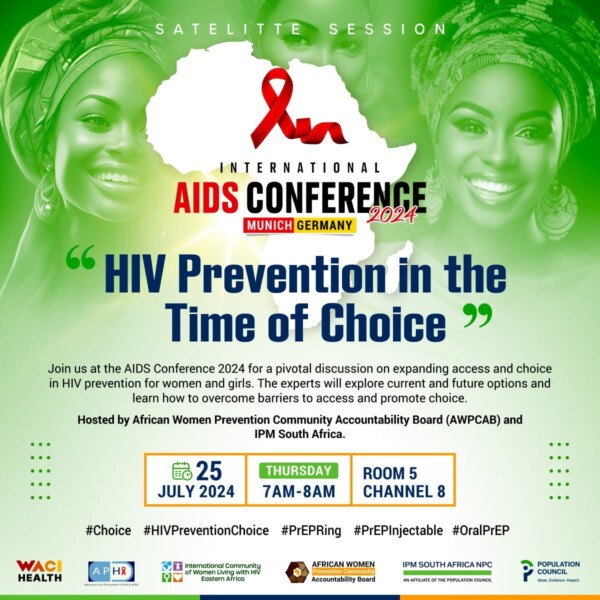
SAT094
HIV prevention in the time of choice (Abstract)
Co-organizers: Population Council and African Women Prevention Community Accountability Board
The HIV epidemic is entering its fifth decade. Despite the availability of treatment and new prevention options, HIV/AIDS remains the leading cause of death in sub-Saharan Africa. To end this epidemic, women and girls need access to a variety of prevention products that align with their preferences. Currently available biomedical prevention options include oral PrEP, the monthly dapivirine vaginal ring (DVR or PrEP Ring) and the recently approved cabotegravir injectable (LA-CAB). Developers are working on expanding this toolkit with improvements on longer-acting injectables and rings as well as on-demand products such as inserts and multipurpose technologies including contraception. However, the promise of biomedical HIV prevention products will only be realized if women can obtain products easily and affordably and if they are empowered to use these products. Product choice empowers women to select and use products which fit their unique lifestyle and circumstances.
IPM South Africa, an affiliate of the Population Council, and African Women’s HIV Prevention Accountability Board (AWPCAB) are co-hosting a panel of experts to discuss what is needed to make the current options available for all women and how to balance resources for expanding access to existing methods while simultaneously developing new methods. The expert panelists will discuss strategies for overcoming the barriers to expanding access to the existing methods, as well as the trade-offs investing in scaling up currently available methods versus developing new methods.
Welcome and introductions
Chilufya Kasanda, TALC, Zambia
Panel discussion on HIV prevention in the time of choice
Michelle Rodolph, WHO, Switzerland
Sindy Matse, Ministry of Health, Eswatini
Diantha Pillay, IPM an affiliate of the Population Council, South Africa
Joyce Ng’ang’a, WACI Health, Kenya
Patriciah Jeckonia, LVCT Health, Kenya
Chilufya Kasanda, TALC, Zambia
Closing remarks
Chilufya Kasanda, TALC, Zambia
(Posters are on display all day, but presenters stand by their posters during this time)
THPEC203
A dual prevention pill for HIV and pregnancy prevention: Results from a pilot study among Adolescent girls and young women in Zimbabwe (Abstract)
B.A Friedland*, M. Plagianos, JB. Burnett-Zieman, S. Mathur, I. Bruce, A. Dandadzi, P. Musara, C. Murombedzi, L.B Haddad, N.M. Mgodi
THPED425
Stigma reduction and mental health promotion for sexual and gender minorities at risk of/living with HIV in Nigeria: implementation lessons (Abstract)
A. Fernandez Eromhonsele, J. Pulerwitz*, W. Tun, A. Gottert, A. Adedimeji

